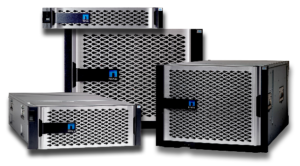Netapp storage systems are a staple in data center operations, and for good reason. They provide exceptional performance and reliability. In this guide, we will be exploring the workings of netapp storage systems, from the hardware components to the software that manages it all.
We will begin by discussing what a netapp storage system is and what its various components are. We will then move on to the software that manages and controls the system, discussing its various features and functions. We will conclude with a guide to setting up and using a netapp storage system.
What is a Netapp Storage System?
A netapp storage system is a hardware and software combination that allows organizations to store large amounts of data. It consists of three main components: the storage nodes, the fabric, and the controller.

What is the Basic Architecture of a Netapp Storage System?
A netapp storage system consists of a number of servers that are interconnected with a network. The servers are connected to the network by Fibre Channel or Infiniband links. The network links provide high-speed connectivity between the servers.
What are the Components of a Netapp Storage System?
Storage nodes: These are the individual units that hold the data. They are generally composed of a microprocessor, memory, and a spinning hard drive.
Fabric: The fabric is a network of storage nodes that allows data to be moved between them.
Controller: The controller is the brains of the system. It manages the storage nodes, the fabric, and the data itself.
What are the Different Types of Netapp Storage Systems?
There are three main types of netapp storage systems:
1. FAS: This type of netapp storage system is the most common and is used by small and medium businesses.
2. NAS: This type of netapp storage system is used by large enterprises and is similar to a RAID array.
3. SAN: This type of netapp storage system is used by large corporations and is similar to a Fibre Channel SAN.
What are the Functions of the Software that Manages a Netapp Storage System?
The software that manages a netapp storage system has a number of functions, including:
– Managing the system
– Controlling the storage nodes
– Updating the firmware on the storage nodes
– Providing data protection
– Managing user access
How Do I Set Up and Use a Netapp Storage System?
Setting up and using a netapp storage system is a relatively straightforward process. However, it is important to note that the system should be configured properly in order to achieve optimal performance.
How do Netapp Storage Systems Compare to Other Storage Systems?
Netapp storage systems are reliable and perform well compared to other storage systems. They also have a low TCO (total cost of ownership).
What are the Advantages of Netapp Storage Systems?
Some of the advantages of using a netapp storage system include the following:
Reliability: Netapp storage systems are highly reliable, and they have been tested and proven to be reliable.
Performance: The storage systems are able to handle large amounts of data quickly and smoothly.
Scalability: The storage systems can be scaled up or down as needed.
Data deduplication: Data deduplication is a feature of netapp storage systems that helps to reduce the amount of data that is required to store the same amount of data.
Conclusion
In this guide, we have provided a comprehensive overview of netapp storage systems. We have covered what a netapp storage system is and what its various components are. We have discussed the software that manages and controls a netapp storage system, and outlined the various functions that it performs. Finally, we have provided instructions on how to set up and use a netapp storage system. So, if you are looking to equip your data center with a reliable and performance-oriented storage solution, look no further than a netapp storage system.